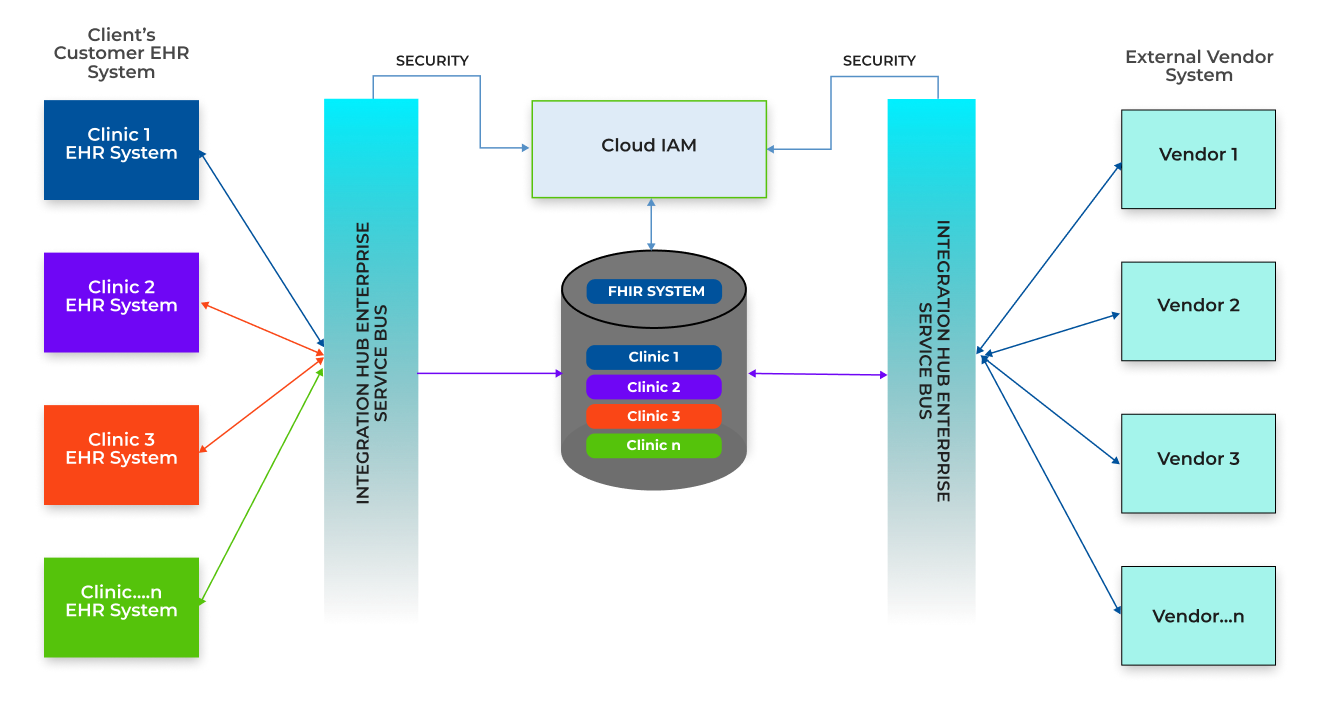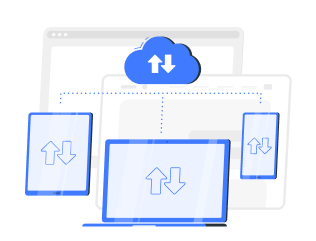Onset of Technical Nightmare Being Unnoticed
A leading fertility EMR (Electronic Medical Records) software provider offering services to over 32% of practices in the United States approached Nalashaa. They sought to simplify its otherwise complicated integration system to establish interoperability between the clinics and vendor systems for the exchange of patient treatment and scheduling information.
The client, serving 120+ clinics, frequently integrates with vendors to enhance their software and stay competitive in the IVF market. Occasionally, clinics request additional functionality not available in the fertility software, necessitating the sharing of integration guides for seamless connectivity with vendors.

How does the Customer's System Work?
The fertility clinic's IT infrastructure is complex, involving multiple actors like patients, medical facilities, specialists, donors, surrogates, and various systems. It requires integration between electronic health records (EHR), laboratory information management systems (LIMS), vendor/partner systems, and artificial reproductive technology (ART) systems. Data compliance and security are crucial in this interconnected environment.

The existing architecture required the client to spend at least $30,000 over a month's integration activity for one vendor. Scaling this to 120+ clinics would be an infrastructural nightmare, posing challenges in managing connections, data traffic, privacy, while draining the system of any intelligence or scalability.
“Simplicity is the key to Brilliance” – Bruce Lee
The Formulation of the Battle Plan
The customer's infrastructure deployment model was based on a Client Server Model with the EMR app hosted on the respective clinic's databases.
The focus was to reduce the complexity of the number of integration channels needed to connect EMR systems of clinics with external services and applications.
Considering the time-to-market, we used Azure FHIR (Fast Healthcare Interoperability Resources) server as the single repository for EMR data to support data exchange between vendor and clinics in a secure manner.
What was done to Solve the Problem?
Think Simple. Build Powerful.
To establish an interoperability hub, the team at Nalashaa decided to centralize data from all clinics in a single FHIR server with a multi-tenancy setup to allow subscribers and vendors query the server after authentication.
Integration Hub was built using the Enterprise Service Bus framework with queues to allow a seamless handshake of information from clinics through the FHIR server to their respective vendor connections for asynchronous message handling and message routing, supported by multiple channels of communication like API, Webhook etc.
We also included cloud IAM for user identification, authorization, and registration purposes, thus ensuring only authorized clinics and vendors send, receive and process patient data, elevating the integrity of the overall system. This also allowed the system to control the amount of data consumed by each vendor service by defining their scope of access in the Active Directory.
In just 4 months, a team of 4 completed the setup, allowing the client to register clinics/vendors on Azure AD and share FHIR API endpoints. Integration time reduced from a month per integration to less than a week for multiple parallel integrations.

Challenges

Every clinic had its own instance of the EMR system. Migrating the data into a central cloud data store all the while complying with healthcare standards was an enormous task.

Managing several integration endpoints in the fertility ecosystem is a daunting and intricate task. The diverse nature of these endpoints, such as different fertility clinics, medical databases, and third-party platforms, introduces a myriad of challenges.

Despite delays in requirements gathering, we engaged in multiple discussions with the customer to understand integration needs and data formats. While it affected development speed, we remained committed to delivering the project on time by leveraging the Agile.
Benefits
Integration with a vendor lasting for a month now only takes a week for multiple integrations.
Recorded API transactions were visible to customers and subscribers based on privileges, facilitating billing, tracing, and resolution of failed transactions.
Opened new monetization channels – customer earns for every new patient record registered in the vendor system.
The multi-tenant, multi-subscriber model that would ideally require a year of implementation effort was built by Nalashaa developers in 4 months, saving the client almost $240,000.
Technology Stack






